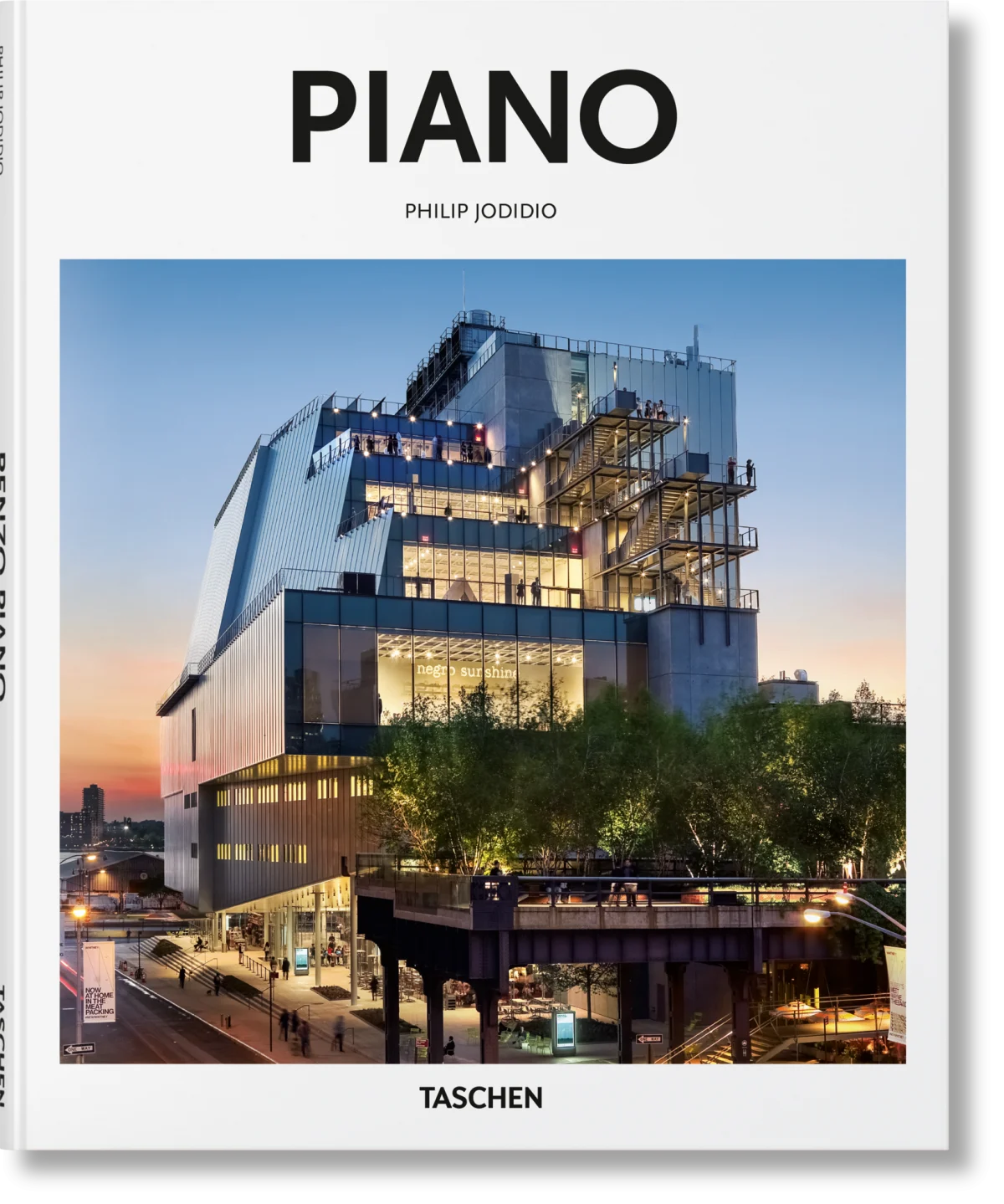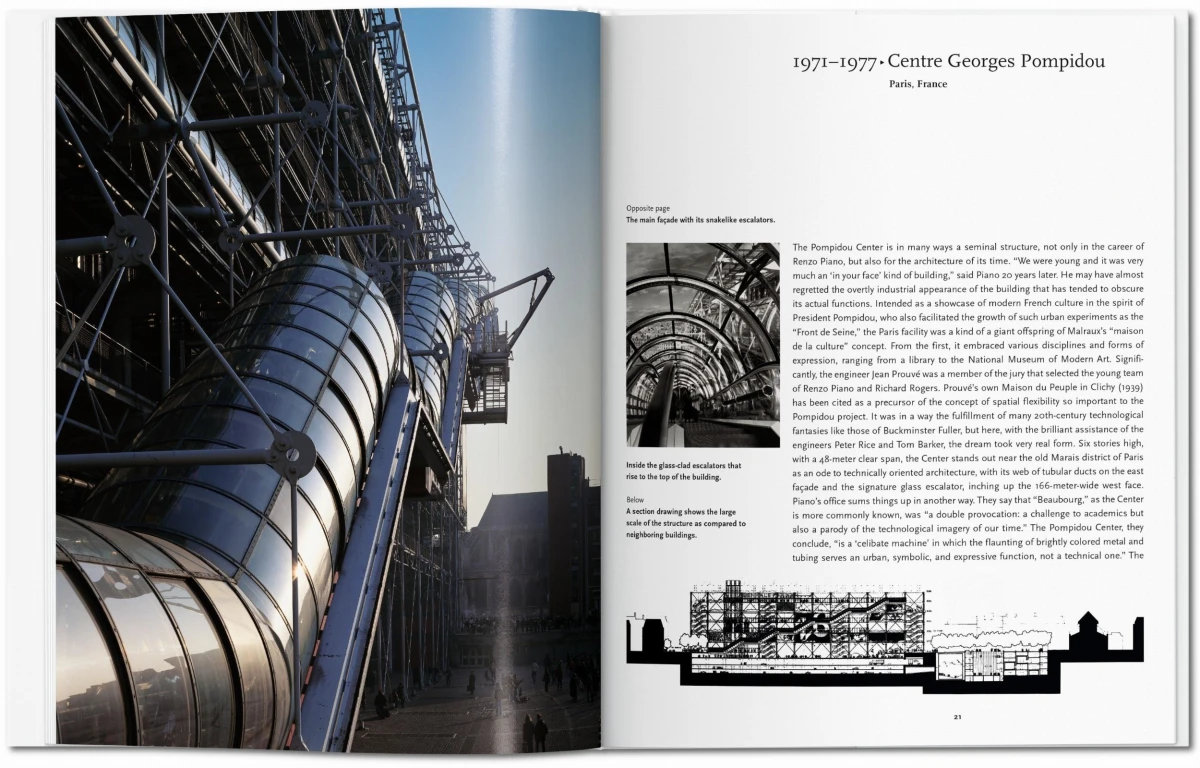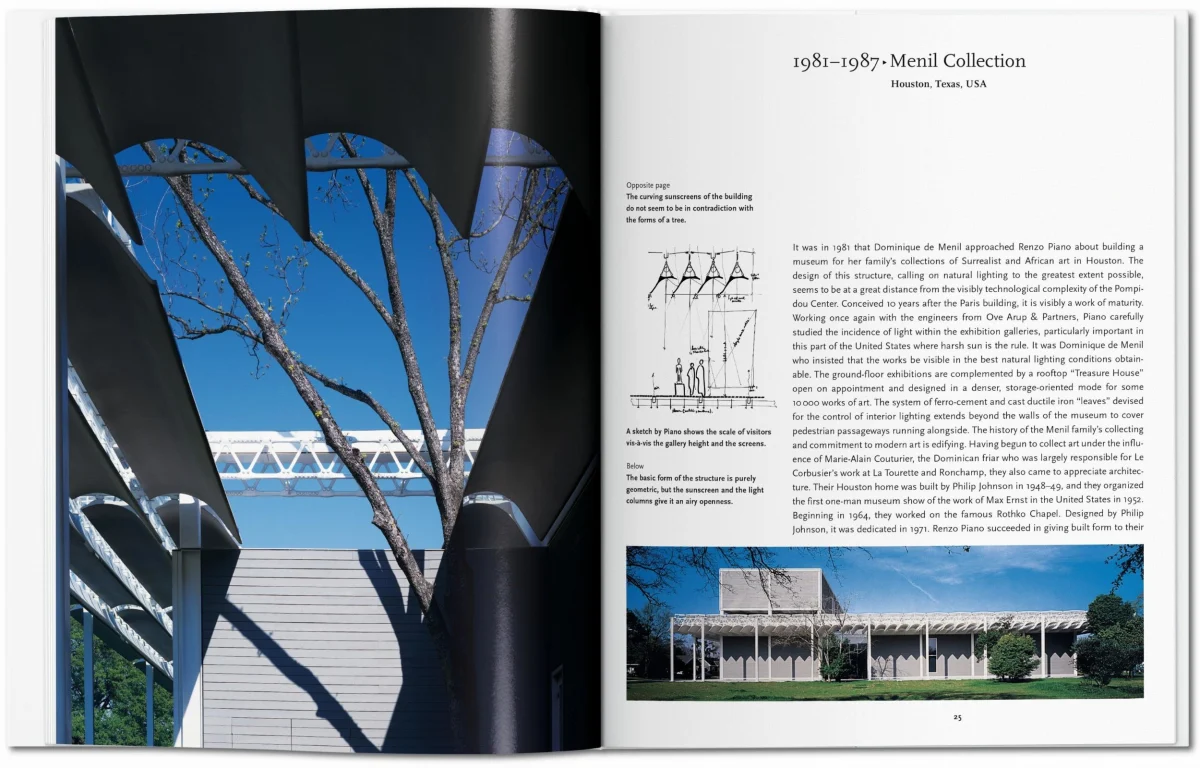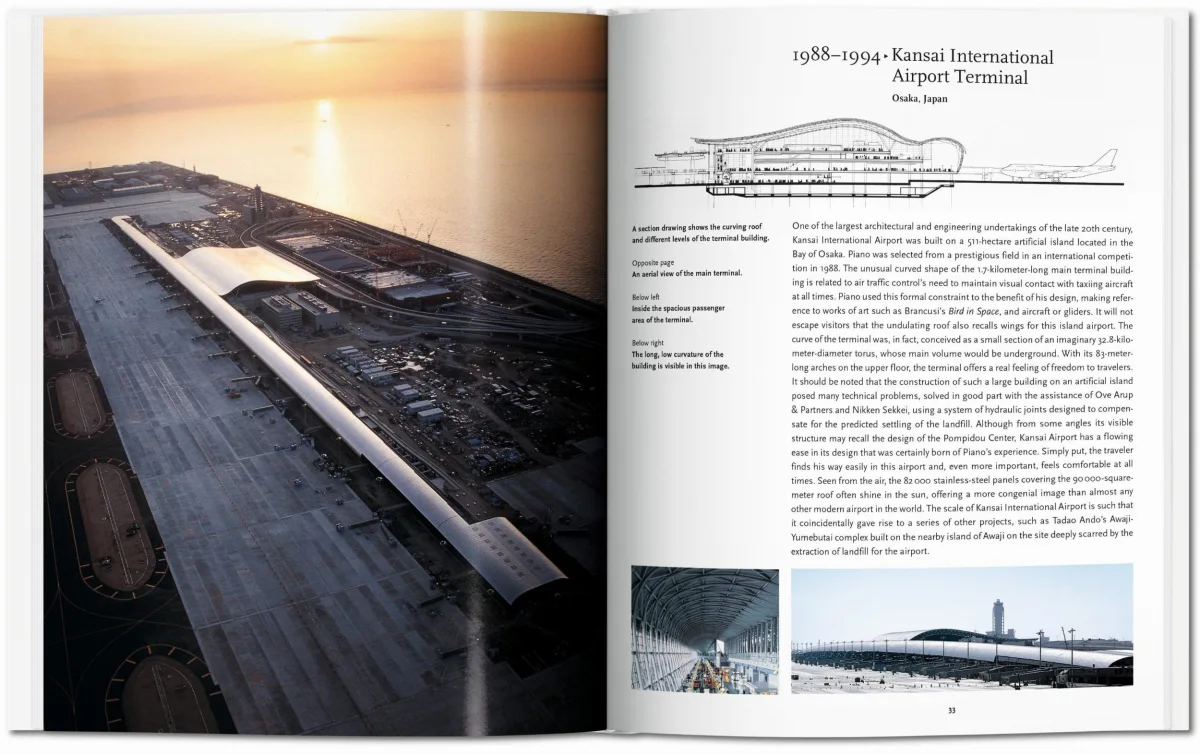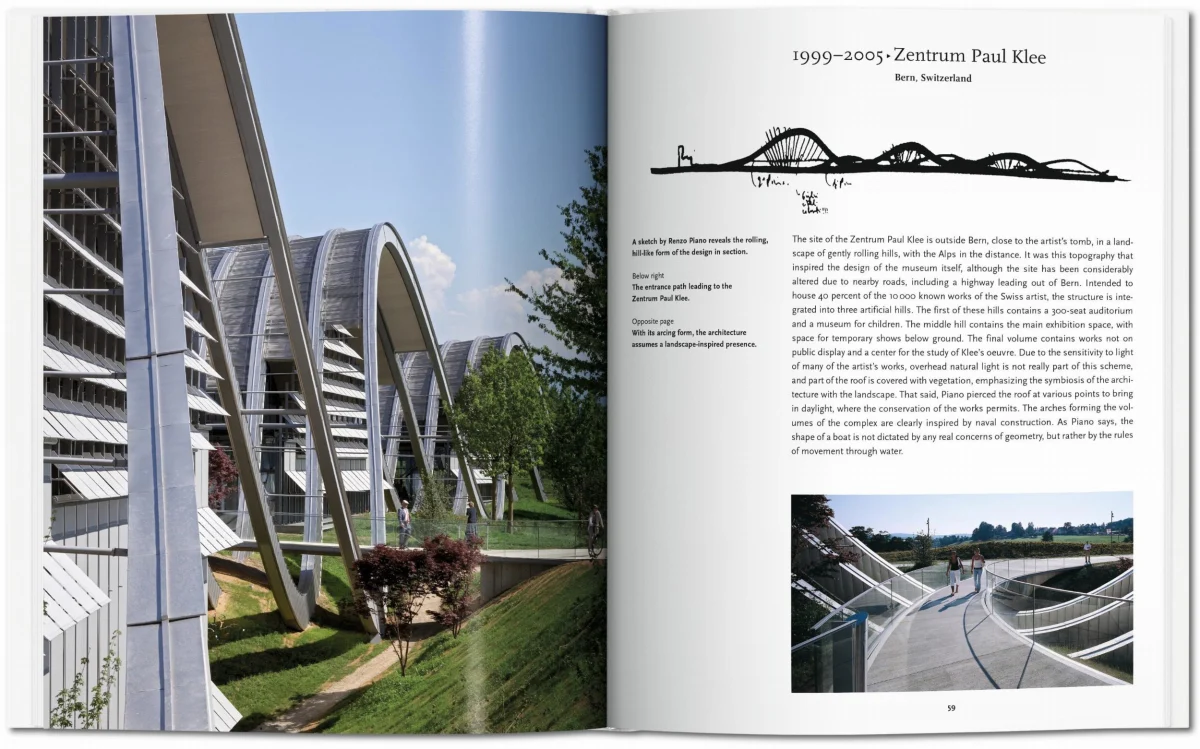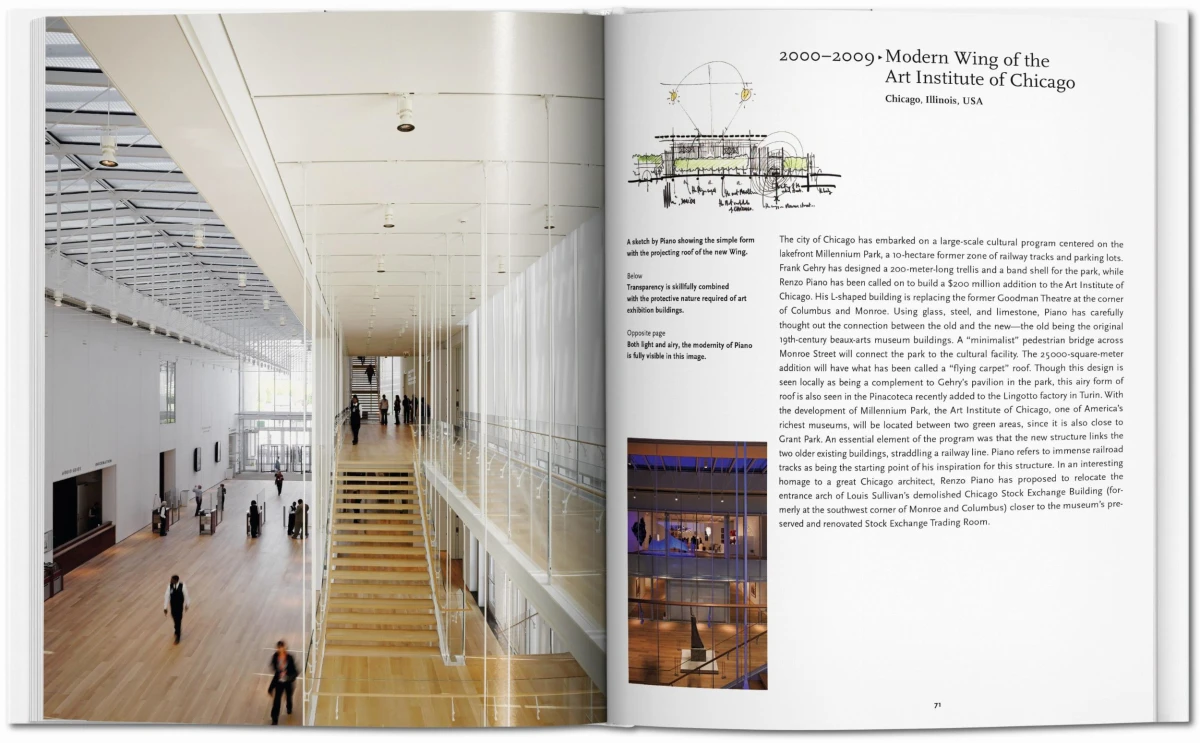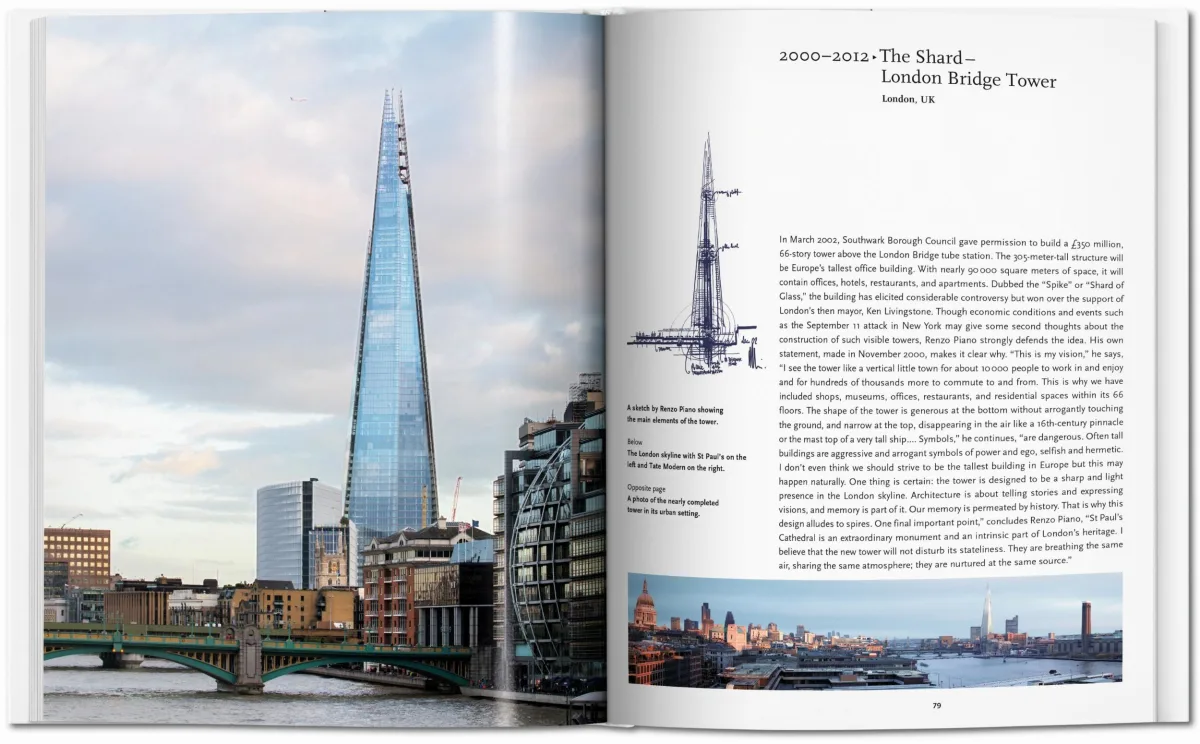Piano
Un viaggio da Osaka, in Giappone, a Berna, in Svizzera, passando per molte città, strutture e isole, per esplorare la straordinaria portata del repertorio di Renzo Piano. Dal "dentro-fuori" del Pompidou alle strutture curve del Centro culturale Tjibaou a Nouméa, in Nuova Caledonia, questa introduzione essenziale all'architetto rivela un visionario irrequieto che si misura costantemente con scala, materiale e forma.

Piano
20Piano rose to international prominence with his codesign of the Pompidou Center in Paris, described by The New York Times as a building that “turned the architecture world upside down.” Since then, he has continued to craft many high-profile cultural spaces, including the Modern Wing of the Art Institute of Chicago; the Morgan Library Renovation and Expansion in New York; and, most recently, the Whitney Museum of American Art, an asymmetric nine-story structure in Manhattan’s Meatpacking District with both indoor and outdoor galleries. In New York and London, the Renzo touch has also transformed the skyline with the towers of the New York Times Building and the Shard, the tallest building in the European Union.
This essential introduction travels from Osaka, Japan, to Bern, Switzerland, and through many cities, structures, and islands in between, to explore the staggering scope of the Renzo Piano repertoire. From the “inside-out” Pompidou to the airy shells of the Tjibaou Cultural Center in Nouméa, New Caledonia, this is a thrilling journey through the beauty of architecture, where, in Piano’s own words, “each time, it is like life starting all over again.”
L'autore
Philip Jodidio ha studiato Storia dell’arte ed Economia ad Harvard e per più di vent’anni è stato curatore della rivista d’arte francese Connaissance des Arts. Tra i suoi libri si annoverano la serie Homes for Our Time di TASCHEN e monografie su vari architetti di spicco tra cui Norman Foster, Tadao Ando, Renzo Piano, Jean Nouvel e Zaha Hadid.
Piano
Copertina rigida, 21 x 26 cm, 0.58 kg, 96 pagineISBN 978-3-8365-3646-2
Edizione: IngleseNata nel 1985, la serie Basic Art è diventata la collezione di libri d’arte più venduta al mondo. Ogni libro della serie Basic Art di TASCHEN contiene:
• una cronologia dettagliata riassuntiva della vita e delle opere dell’artista, inserito nel contesto storico e culturale in cui è vissuto
• una biografia concisa
• circa 100 illustrazioni con didascalie esplicative
5

